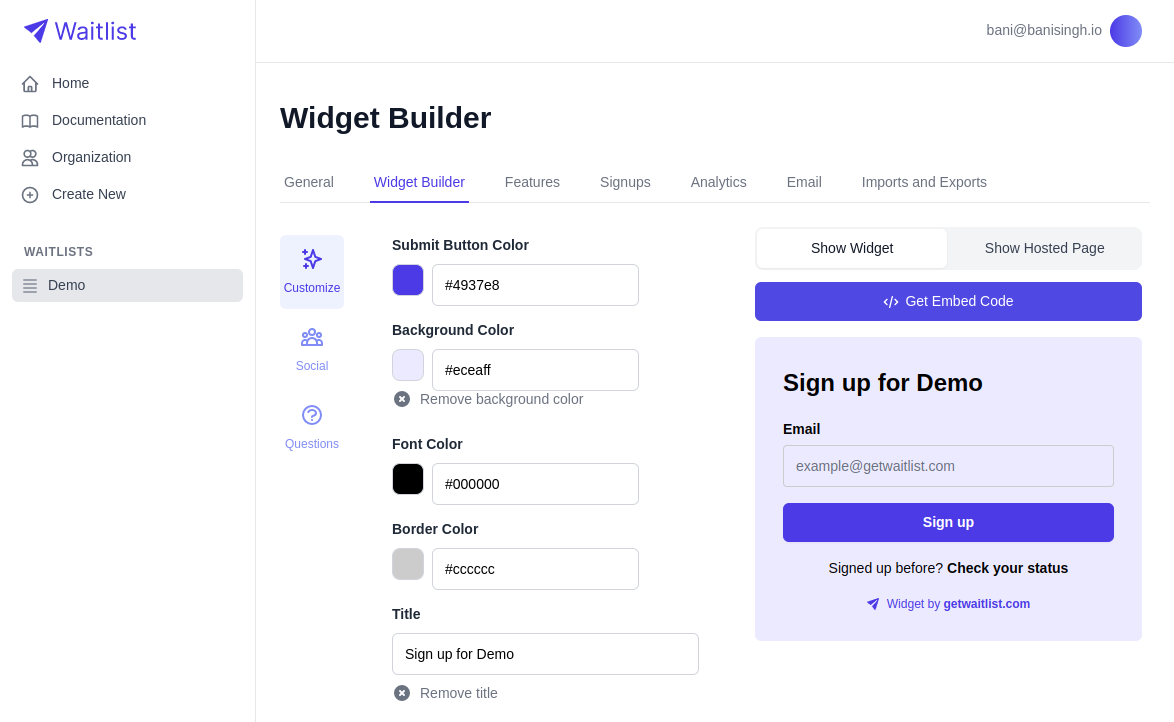Here's what most people get wrong about waitlists: they think it's just about collecting emails and sending updates.
But the smartest founders we've worked with? They turn their waitlists into actual communities. And the results are pretty incredible.
While most waitlists see 2-5% email open rates and maybe 1-2% conversion to customers, community-powered waitlists are hitting 40-70% engagement and 15-25% conversion rates. Some are even higher.
The difference isn't just numbers—it's that passive waitlists create anticipation, but communities create belonging. And people buy from brands they feel connected to.
Why This Works So Well
Think about it: when you join a typical waitlist, you give your email and then... wait. Maybe you get an update every few weeks. There's no connection, no interaction, no reason to stay engaged.
But when you join a community around a product launch, suddenly you're:
- Talking to other early users who are just as excited as you
- Getting behind-the-scenes updates and sneak peeks
- Having your feedback heard by the founders
- Building relationships with people in your industry
By the time the product launches, you don't just want it—you feel like you helped build it.
The 4 Steps to Build Community Around Your Waitlist
1. Start with Value, Not Product Updates
Before you even think about building a community, ask yourself: what can you offer people beyond just "we'll let you know when we launch"?
The best community waitlists offer:
- Educational content: Weekly tips related to the problem you're solving
- Exclusive insights: Industry trends and analysis
- Behind-the-scenes content: How you're building, what you're learning
- Networking: Connecting like-minded people in your community
For example, if you're building a design tool, don't just send product updates. Share design tips, showcase community work, host design challenges, connect designers with each other.
2. Pick the Right Platform
Your choice depends on your audience:
- Discord: Great for tech, gaming, or younger audiences who like real-time chat
- Slack: Perfect for B2B products and professional communities
- Facebook Groups: Works well for consumer products and older demographics
- Circle or similar: Good for course creators and structured learning
We've seen Discord work really well for developer tools and SaaS products. The key is going where your audience already hangs out.
3. Make Engagement Easy and Rewarding
Here are some tactics that work:
- Weekly discussion prompts: "What's your biggest challenge with [problem you're solving]?"
- Member spotlights: Feature interesting community members and their work
- AMA sessions: Regular Q&As with your team
- Exclusive previews: Show new features first to community members
The secret is making people feel heard. When someone shares feedback and you implement it, make sure to call it out publicly.
4. Turn Members into Advocates
The best communities become self-sustaining. Members start:
- Answering each other's questions
- Sharing the community with their networks
- Creating content about your product
- Defending your brand when others criticize it
To get there, recognize and reward your most active members. Give them special roles, early access, or even advisory positions.
Real Examples That Work
Superhuman built a VIP community for their email client during their 2-year development. They offered productivity masterclasses, exclusive content, and direct founder access. Result? 275,000 waitlist members with a 22% conversion rate.
Notion started with a student community, helping students with productivity and study tips. Students naturally shared it with classmates. They converted this into 4M+ users and many paid customers.
Clubhouse made their invite-only community exclusive and exciting. People were selling invites on eBay. The scarcity created huge demand.
Common Mistakes to Avoid
Building community before having value: Don't create a Discord server just because. Have something valuable to offer first.
Being too salesy: If every message is about your product, people will tune out. Focus on helping your community members succeed.
Not engaging personally: The founder voice matters, especially early on. Don't just delegate this to your marketing team.
Ignoring feedback: When your community gives suggestions, either implement them or explain why you won't. Nothing kills a community faster than feeling ignored.
Getting Started
If you're ready to turn your waitlist into a community:
- Start small: Get your first 50-100 members engaged before worrying about growth
- Be consistent: Post valuable content regularly, even if it's just a few times a week
- Show up personally: Your early community members want to connect with the founder
- Listen actively: Pay attention to what resonates and what doesn't
The goal isn't just to build a bigger waitlist—it's to build relationships with people who will become your biggest advocates when you launch.
And when those people are already invested in your success, converting them from waitlist to customer becomes a lot easier.
Making It Viral
The best part about community-powered waitlists? They grow themselves. Happy community members naturally invite friends and colleagues who would fit in.
You can help this along by:
- Making it easy to invite others ("Know another designer who'd love this?")
- Recognizing people who bring in great new members
- Creating content that members naturally want to share
At Waitlist, we've seen communities grow from 100 members to 10,000+ just through word-of-mouth because the value was there and members genuinely wanted to share it.
Remember: the best marketing doesn't feel like marketing. It feels like helping.
